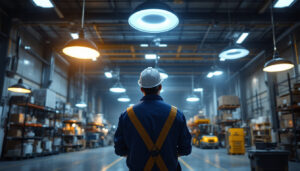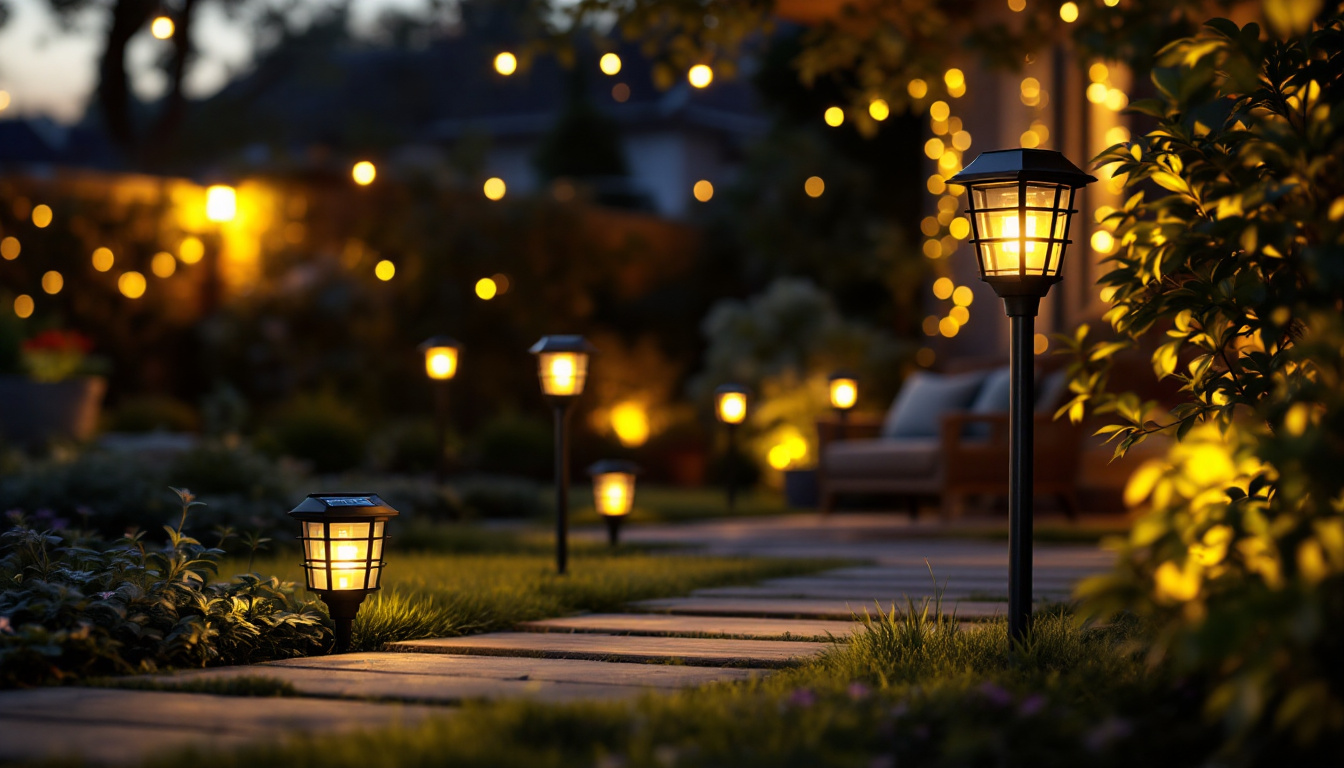

In the realm of outdoor lighting, motion lights have emerged as a pivotal component of modern lighting solutions. These innovative fixtures not only enhance security but also contribute to energy efficiency and convenience. As lighting contractors explore the latest trends and technologies, understanding the role of motion lights becomes essential for delivering comprehensive outdoor lighting solutions to clients.
Outdoor lighting has come a long way from traditional incandescent bulbs and simple floodlights. The demand for smarter, more efficient lighting solutions has driven advancements in technology and design. Motion lights, in particular, have gained popularity due to their ability to respond to movement, providing illumination only when necessary.
This evolution reflects a broader shift towards sustainability and smart home integration. Homeowners are increasingly seeking lighting solutions that not only enhance their property but also reduce energy consumption and increase safety. As a result, motion lights have become a staple in outdoor lighting design.
Initially, motion lights were basic fixtures that relied on passive infrared sensors to detect movement. However, modern motion lights incorporate advanced technologies such as dual technology sensors, which combine passive infrared and microwave detection for improved accuracy and reliability. This evolution has led to the development of smart motion lights that can be integrated with home automation systems.
These intelligent systems allow homeowners to control their outdoor lighting remotely, set schedules, and even receive alerts when motion is detected. This level of control not only enhances security but also provides convenience, making it easier for homeowners to manage their outdoor spaces effectively. Additionally, many of these smart lights can be programmed to work in conjunction with other smart devices, such as security cameras and alarms, creating a comprehensive security network that offers peace of mind.
Furthermore, the aesthetic aspect of outdoor lighting has also seen significant advancements. LED technology has not only improved energy efficiency but has also allowed for a wider range of colors and brightness levels, enabling homeowners to customize their outdoor ambiance. From warm, inviting tones for gatherings to bright, white lights for safety, the versatility of modern outdoor lighting can transform any space. Landscape lighting, path lights, and decorative fixtures can now be seamlessly integrated with motion sensors, ensuring that both form and function are prioritized in outdoor design.
Motion lights offer a myriad of benefits that make them an attractive option for outdoor lighting. Understanding these advantages is crucial for lighting contractors aiming to provide value to their clients.
One of the primary reasons homeowners choose motion lights is for enhanced security. The sudden illumination triggered by movement can deter potential intruders and alert residents to any unusual activity around their property. This proactive approach to security is particularly valuable for homes in areas with higher crime rates.
In addition to deterring intruders, motion lights can also provide peace of mind for homeowners. Knowing that their outdoor spaces are well-lit and monitored can significantly reduce anxiety, especially during nighttime hours. Furthermore, many motion lights come equipped with advanced features such as adjustable sensitivity and customizable light duration, allowing homeowners to fine-tune their security settings based on their specific needs and the layout of their property.
Energy efficiency is another compelling reason to consider motion lights. Traditional outdoor lighting systems often remain on throughout the night, leading to unnecessary energy consumption. In contrast, motion lights only activate when movement is detected, ensuring that energy is used only when needed.
This not only lowers electricity bills but also contributes to a more sustainable lifestyle. Many modern motion lights utilize LED technology, which further enhances energy efficiency by consuming significantly less power than traditional bulbs. Additionally, some models are solar-powered, harnessing renewable energy from the sun, which can further reduce reliance on the electrical grid and promote eco-friendly practices.
Motion lights are incredibly convenient for homeowners. They provide automatic illumination when needed, eliminating the need to fumble for switches or rely on timers. This is particularly beneficial for areas such as driveways, walkways, and patios, where visibility is crucial for safety.
Moreover, motion lights come in various styles and designs, allowing contractors to offer tailored solutions that meet the aesthetic preferences of their clients. From sleek, modern designs to more decorative options, there is a motion light to suit every outdoor space. In addition, many motion lights are equipped with smart technology, enabling homeowners to control their lighting remotely via smartphone apps. This added layer of convenience allows users to adjust settings, receive notifications, and even monitor their property in real-time, enhancing both usability and security.
Selecting the appropriate motion lights for a project involves several considerations. Lighting contractors must assess the specific needs of the property and the preferences of the homeowner to ensure optimal results.
Understanding the different types of sensors available is essential when choosing motion lights. Passive infrared (PIR) sensors detect heat emitted by moving objects, making them ideal for detecting human movement. However, they may not be as effective in detecting smaller animals or objects.
On the other hand, microwave sensors emit microwave signals and can cover a larger detection area. They are more sensitive and can detect movement through obstacles, making them suitable for various outdoor applications. Contractors should consider the specific environment and intended use when recommending sensor types to clients.
The light output and coverage area of motion lights are critical factors to consider. Different fixtures offer varying levels of brightness and beam angles, which can affect their effectiveness in illuminating outdoor spaces. For instance, a wide beam angle may be necessary for larger areas, while focused beams may be more suitable for highlighting specific features.
Contractors should also take into account the color temperature of the light. Warmer tones can create a welcoming ambiance, while cooler tones may enhance visibility and security. Understanding the desired atmosphere of the outdoor space will guide the selection process.
Proper installation is crucial for the effective functioning of motion lights. Contractors should ensure that the lights are positioned at appropriate heights and angles to maximize their detection capabilities. Additionally, consideration should be given to the power source, whether it be hardwired or solar-powered, based on the specific needs of the project.
Maintenance is another aspect that should not be overlooked. While motion lights are generally low-maintenance, regular cleaning of the sensors and fixtures is necessary to ensure optimal performance. Contractors can provide clients with guidelines on maintenance to help prolong the lifespan of the lights.
The rise of smart home technology has transformed the way homeowners interact with their lighting systems. Integrating motion lights with smart home systems can enhance their functionality and provide added convenience.
Smart motion lights can be controlled remotely through mobile apps or smart home hubs. This allows homeowners to turn lights on or off, adjust settings, and monitor activity from anywhere. Such capabilities are particularly valuable for those who travel frequently or want to keep an eye on their property while away.
Moreover, many smart motion lights can send notifications to homeowners when motion is detected, providing an additional layer of security. This integration not only enhances the functionality of motion lights but also aligns with the growing trend of home automation.
When recommending motion lights, contractors should consider their compatibility with other smart devices in the home. Many motion lights can be integrated with security cameras, doorbells, and alarms, creating a comprehensive security system that can be controlled from a single platform.
This interconnectedness allows homeowners to create customized lighting scenes and routines, further enhancing the convenience and security of their outdoor spaces. For example, motion lights can be programmed to turn on when a security camera detects movement, providing immediate illumination in response to potential threats.
The landscape of outdoor lighting is continually evolving, and motion lights are no exception. As technology advances, several trends are emerging that will shape the future of motion lighting solutions.
With the growing emphasis on sustainability, solar-powered motion lights are gaining traction. These fixtures harness solar energy during the day and use it to power their lights at night. This not only reduces electricity costs but also minimizes the carbon footprint associated with outdoor lighting.
As battery technology improves, solar-powered motion lights are becoming more efficient and reliable. Contractors should stay informed about the latest advancements in solar technology to offer clients eco-friendly lighting solutions.
The integration of artificial intelligence (AI) into motion lighting systems is on the horizon. Future motion lights may incorporate smart sensors that learn from user behavior, adjusting their sensitivity and illumination levels based on patterns of movement. This level of intelligence can further enhance energy efficiency and security.
Contractors should keep an eye on these developments, as they represent an opportunity to provide cutting-edge solutions that meet the evolving needs of homeowners.
Motion lights play a crucial role in modern outdoor lighting solutions, offering enhanced security, energy efficiency, and convenience. As lighting contractors navigate the evolving landscape of outdoor lighting, understanding the benefits and features of motion lights is essential for delivering tailored solutions to clients.
By staying informed about the latest technologies and trends, contractors can position themselves as experts in the field, providing valuable insights and recommendations to homeowners. As the demand for smart, efficient lighting solutions continues to grow, motion lights will undoubtedly remain a key component of outdoor lighting design.
Ready to elevate your outdoor lighting projects with the latest motion lights? At LumenWholesale, we provide lighting contractors with the highest quality, spec-grade lighting products at unbeatable wholesale prices. Our extensive selection of motion lights is designed to meet the highest industry standards, ensuring your projects shine with reliability and high performance. Plus, with free shipping on bulk purchases, you can stock up on premium lighting solutions at the best value — without any hidden fees. Don’t compromise on quality or cost. Discover the best in wholesale lighting and make your next project a beacon of efficiency and innovation with LumenWholesale.

Discover the essential insights lighting contractors need about outside solar lights.

Discover the essential insights every lighting contractor needs about fluorescent light bulbs.

Discover the essential insights lighting contractors need to know about LED strips.

Discover how a High Bay Lighting Layout Calculator can revolutionize your lighting projects by enhancing efficiency and precision.
Get notified when NEW deals are released.
Optimize your budget with wholesale discounts.
Only top-quality, specification-grade lighting products.
No additional costs at checkout - what you see is what you pay.
We understand the unique needs of contractors.